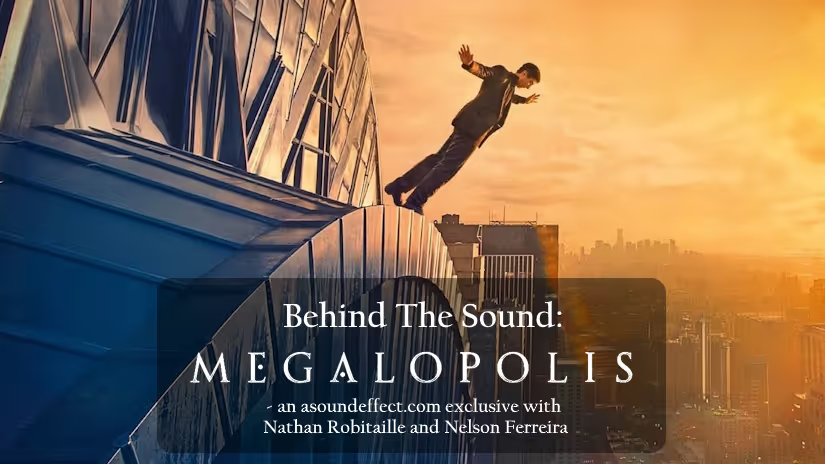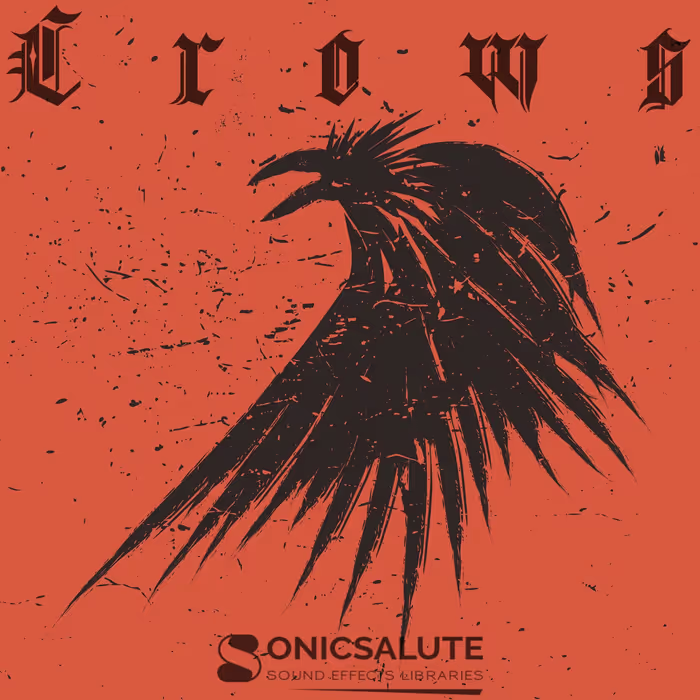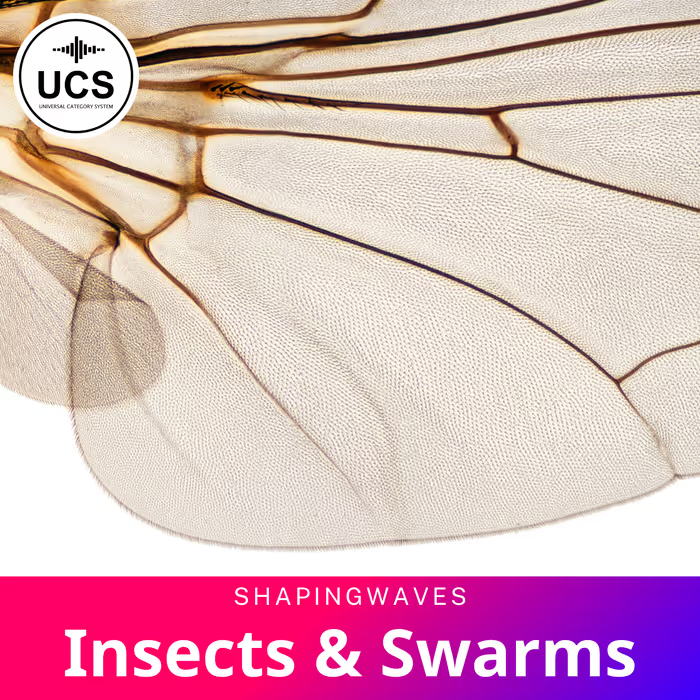Leaping into the sound work on the film was certainly a freeing experience for supervising sound editors Nathan Robitaille and Nelson Ferreira at Sound Dogs Toronto. They were encouraged to 'get weird,' to bring their unique creativity to bear on the film. It was a truly collaborative experience that required a leap of faith and ultimate trust in their director.
Here, Robitaille and Ferreira share their experience of working with legendary filmmaker Francis Ford Coppola, working in a collaborative, creative environment in Peachtree City, creating the sound of the city of New Rome, designing the sound of the megalon, the sound of Cesar's substance-fueled sequence during the garish wedding of Crassus and Wow Platinum, and the sound of time stopping, building believable crowds, and much, much more!
Oscar-nominated supervising sound editors Nathan Robitaille (also sound designer) and Nelson Ferreira at Sound Dogs Toronto (known for their sound work on Guillermo del Toro’s The Shape of Water and the hit sci-fi series The Expanse) flexed their creative muscles on Francis Ford Coppola’s Megalopolis – in theaters now. Set in “New Rome” (a 21st-century version of New York City), the film is a dreamy sci-fi fable about the corruption of power, the audacity of the wealthy and exploitation of the poor, the fall of an empire, and the hope of rebuilding a utopia in its place.
Master filmmaker Coppola encouraged his post sound team to get weird, to push past the edge of their creative bounds. He embraced collaboration, setting up a facility in Georgia where the post-production team would live and work side-by-side. It was an incubator for Coppola’s creative vision that was beyond the reach of mainstream filmmaking. The result is a film that some movie-goers haven’t seen for a long time (not since Fellini’s surreal and dreamy films), or have never seen. Megalopolis goes against the grain of today’s formulaic film trend. It’s weird, surreal, and unforgettable.
Here, Robitaille and Ferreira talk about getting weird, about finding the singular sound of Megalopolis with support from Coppola and picture editor Cam McLaughlin. They talk about how they created the sound of New Rome, what went into crafting the spectacle that is Crassus and Wow Platinum’s wedding at the Coliseum (i.e., Madison Square Garden), recording loop group for the massive, dynamic crowds, designing Cesar’s substance-fueled trip during that wedding, what went into the sound of the megalon material that’s the building block for Cesar’s utopian construction, how they approached the sound of stopping time, what it was like working as a team in Peachtree City, and much, much more!
Megalopolis (2024) Official Trailer
Megalopolis is a dreamy, otherworldly film. How did you begin to find the sound for this unique reality that Coppola created? What were some of your guideposts or parameters for what this film should sound like?
Nathan Robitaille (NR): The first time we watched an early cut with Francis, there was stark silence. It was a room full of sound professionals and a few others who just sat there and didn’t say a word.
When we finally turned around and looked at him, he said, “It’s weird, right? It’s weird. Is it weird enough?” The general response was, “Yeah it’s pretty weird, man.”
…we watched it again with him and got a live director’s commentary, which was wildly helpful in mentally processing the material.
The next day we watched it again with him and got a live director’s commentary, which was wildly helpful in mentally processing the material. When you hear it straight from his mouth as you’re watching it – that kind of blow-by-blow – it lets you in on what he’s attempting to express through all of this. That was creatively very useful.
Nelson Ferreira (NF): I agree with everything Nathan said. I’ll always remember that screening as I’m sure Nathan will. We all just looked at each other and didn’t know what to say. During that subsequent screening, he walked us through it. By the end of that, we would follow him anywhere.
There was a method to the madness. He was describing what he was trying to achieve. Within those two screenings, he actually looked at each of us and said, “What can you as a filmmaker bring to this? What do you think you could do for this?”
…we were entering a collaboration; we were entering a melting pot of ideas.
That’s when we quickly realized that we were entering a collaboration; we were entering a melting pot of ideas. It suddenly got very exciting.
NR: He didn’t put us on the spot though. He knew we watched it alone and then we watched it with him. I think he enjoyed this almost discomfort that comes with watching a movie like that in its infancy, without any kind of guidelines…
NF: And then he gave us the blow-by-blow. That’s when he turned to us and asked, “What can you do?” to each of us there.
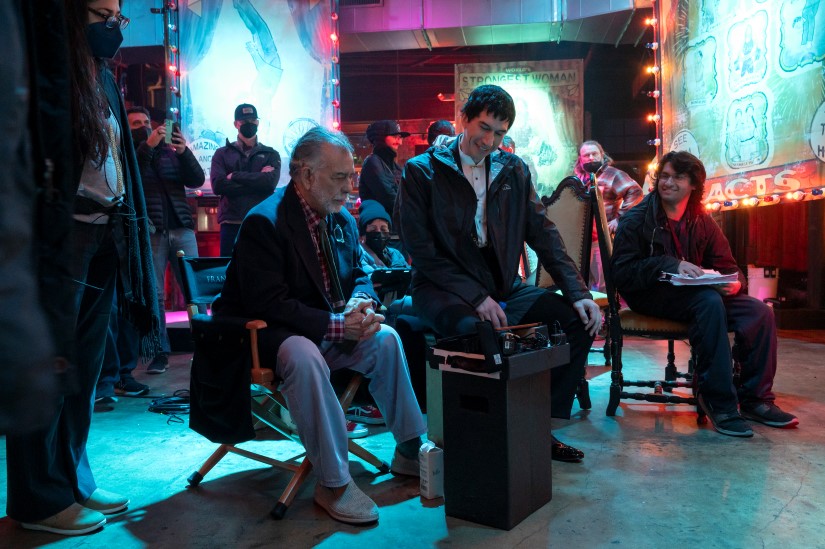
I love that! For this initial screening, was there any temp sound or temp music? Was there any indication of what this film could sound like?
NR: A little bit. I credit editor Cam McLaughlin for bringing us on. We’ve got a good history with Cam and he’s usually good at fleshing out a temp track in the Avid. That covers some of that initial directorial shorthand.
I’m not sure if the composer Osvaldo Golijov had started yet.
NF: There wasn’t a temp music editor. It was Cam just pulling bits and pieces of score from other movies. He’s a good music editor but still, the movie is fragmented in a way in its style, and without one score to draw a straight line through it, it felt even more fragmented at the time of the screening – maybe even a little more confusing. The challenge was to try to draw it all together.
One thing that Francis did say when we started was, “Are you ready to get weird?”
NR: I remember he specifically said, “You can’t get too weird.”
So we got weird, and then he would escalate that. I’ve never met a person with more of a firm grasp on what it means to be weird. He thrives on it. He loves unusual, strange, odd choices. And, man, can he run with them! He was always there to fan any sparks in the grass.
He loves unusual, strange, odd choices. And, man, can he run with them!
One of the thematic ideas he shared with us to get us going was a focus on time. That’s not a new thing for Francis; he’s always been fascinated by time. In the opening, we start with a massive grandfather clock that hands off to a distant pile driver in some off-screen NYC construction site. From there onward, you’ll hear a lot of imagined clocks – real-world ambient elements that land in rhythms but aren’t linked to anything on screen.
Most scenes have one form of clock or another. Francis referenced films like Black Orpheus and how there was always music going on. He liked there to always be some kind of tempo. Whether that came from sound effects, music, or some combination of the two didn’t matter.
We were given a lot of creative license.
And that’s where Jeremy Flower (music editor) comes in. He put in a monumental effort to blend Osvaldo’s score with Cyro Baptista’s percussion ensemble. Those percussion tracks were wild. At times they bordered on performance art and Jeremy pulled all that music into focus during the mix.
The other big theme for Francis was love. He talked about that dangerous kiss scene where Cesar Catilina and Julia Cicero are up on the girders in the sky. One of the first things Francis said is, “In a moment like that – the first time you kiss a girl – it’s a dangerous moment in your life because everything could change.” That’s the way he paints that feeling here. To him, it’s a high-wire act suspended above skyscrapers in New Rome.
We were given a lot of creative license. As Nelson said before, at times it felt like Francis was as interested in what we wanted to do with this movie as he was in telling us what he wanted done.
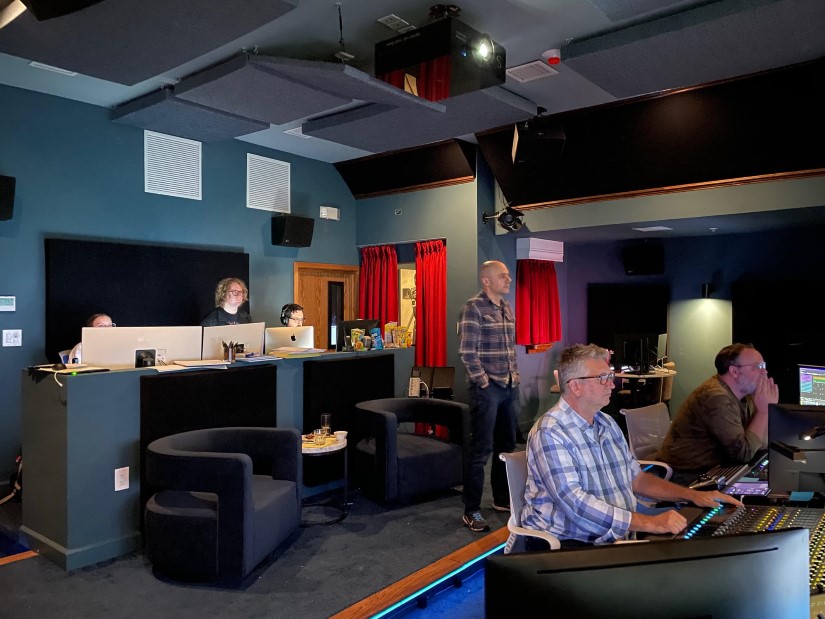
I love that it was an open collaboration and that you were given the freedom to ‘get weird.’ It’s playing in a sandbox at that point…
NF: That’s what it was. Francis sent an email the day before the mix started and it was a quote from a 1953 Broadway musical that basically said that whatever you do, just have fun in making it. And it was like, oh, wow. It was just so elevating to hear that. He just wanted us to keep it light, and to set the tone for us socially (for the atmosphere within the room, not necessarily how the film should sound). It set the tone for how we might interact in the room for the next month. He really gave us wings. It was great.
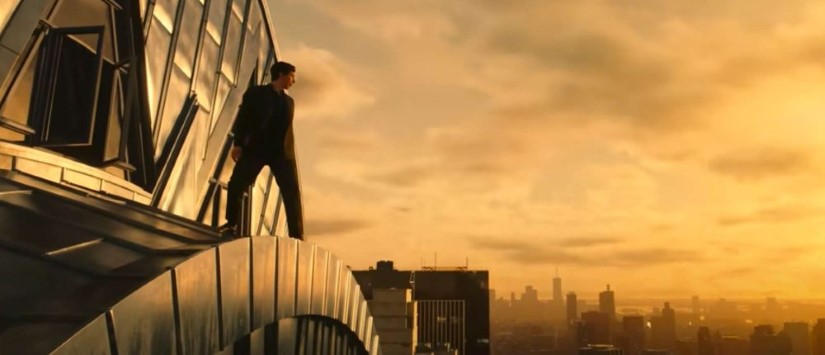
How did you create the sound for the city of New Rome in Megalopolis? What were some of your challenges in meshing modern NYC with old Roman aesthetics? How did you bridge those two ideas together sonically?
NR: A lot of the ancient Rome aspect came from dialogue.
As for the actual ambiences in the city, I have to credit Scott Hitchon. He did a masterful job modeling New Rome after a very dense New York City. There was no directive to have him honor any kind of old Roman aesthetics. In modern Manhattan, you hear horses, you hear elements that would be completely at home in a Roman epic. His focus was making it feel as overbearing as NYC can feel to an outsider. Tourists to New York have this impression of what that city sounds like. So that’s largely what Scott was shooting for. We just let him run with it. He nailed it.
…I was creating character-name dictionaries of Roman names to keep the loop group callouts somewhat accurate and period-specific.
I don’t think the Roman aspect and modern NYC aspect clashed at all. The language style in the dialogue of this movie didn’t rub up against the modern aesthetic of the sounds that we were putting in.
NF: I would agree. From early descriptions of the film, people knew what Francis was doing. It’s an apt comparison that’s been made before in terms of Rome and America and falling empires. It just happened organically and everyone bought it.
For me, I was creating character-name dictionaries of Roman names to keep the loop group callouts somewhat accurate and period-specific. Apart from that, it wasn’t much different from any other urban backdrop that we might create.
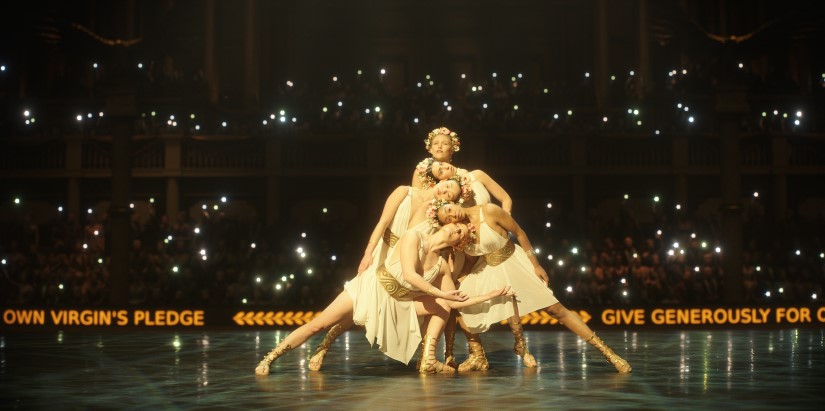
The wedding scene in particular is where the two aspects – old Rome and modern NYC – come together the most. You have gladiator fights and horses racing around Madison Square Garden. It was definitely like a Roman festival/celebration…
NF: For the voices in the crowd, we were tasked with creating these washes of crowds that reflected the mood of the people, who their heroes and villains were within the story, and we tried to strike a balance between a colosseum crowd from ancient Rome – one hungry for raw meat – to an adoring fan base for Vesta to an angry New York City mob. There had to be a place for all of that within that scene. For me, that whole 15 minutes is the centerpiece of the film, certainly from my point of view and the amount of work to be done.
With all the horses and the gladiator fights, Craig [MacLellan] delivered a pretty detail-rich spectacle.
NR: Same here. Sound effects editor Craig MacLellan ran with that scene in the early days and man, what he came back with was pretty fleshed out. It didn’t need a lot more after he was done with it. With all the horses and the gladiator fights, Craig delivered a pretty detail-rich spectacle. Scott and I got to have fun off-screen through there but Craig lit that scene up. I remember he added these advertisements over the PA system – like, when you’re at a sports event and you hear someone over the PA system advertising Pepsi or something like that. He threw one of those in there because it felt really tacky that they’d be monetizing this big, opulent wedding. It was fitting. We soloed that for Francis and he loved the idea.
NF: Francis responded so positively to that and that got us energized. So then we recorded a ‘hype-girl’ in the crowd doing the t-shirt cannon, and a 50/50 raffle among other things. We went to town on this and commercialized it as much as we possibly could, just to make the wedding all that more of a trashy, commercial experience.
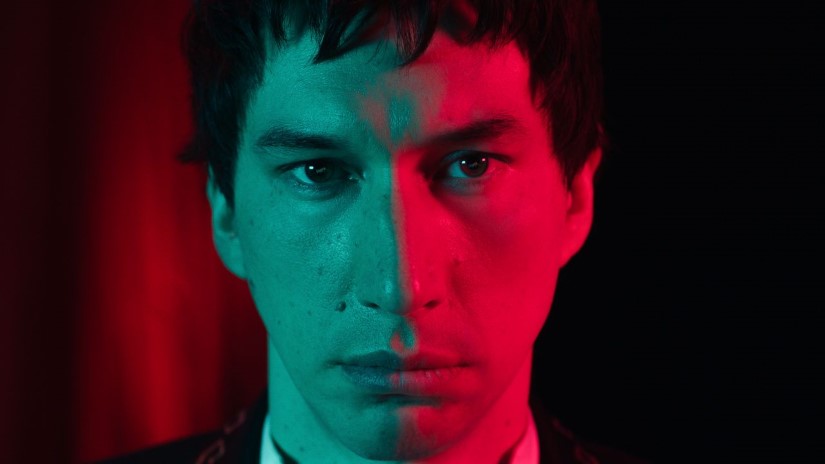
How did you handle the sound for Cesar Catilina’s drug and alcohol-fueled POV moments (like during this wedding of Crassus and Wow Platinum?)
NR: I wanted to highlight Cesar’s flaws. Earlier in the film, we establish Cesar as a stabilizing figure. During the suspended catwalk scene as they’re discussing solutions for a city on the verge of collapse, the catwalk is rickety and shaky until Cesar steps onto it. Then, everything firms up.
The foley team of Andy Malcolm, Goro Koyama, Chelsea Body, and their crew at Footsteps created two different languages of footsteps. One set where everything felt like it was about to break and collapse, and another set just for Cesar, which we complemented with, deep, rumbly groans like an old oak tree. Everything becomes more stable when he arrives like he’s planted in his vision. If you follow him, you’re on solid ground.
…that substance-fueled insanity that he goes through at Madison Square Gardens is a display of the flaws, vices, and insecurities that he carries with him.
But he’s still human, and he’s still grieving the loss of his wife. So to me, that substance-fueled insanity that he goes through at Madison Square Gardens is a display of the flaws, vices, and insecurities that he carries with him.
It started with a lot of water sounds to represent the watery grave of his wife and to let us follow him into that grief. And then it was a matter of piling on the hyper-stimulating, tactile sounds that highlight his overindulgence in substances. Then it was all about using rhythms to follow the story thread.
…I started putting in all these rhythmic clapping bills through that sequence. And you’ll even hear weird, callouts from storks…
For example, there was a sequence where Julia is following him through the hallways and they’re doing this invisible rope tug-of-war dance. That, to me, was the beginning of this mating ritual. I remember reading about storks; when they’re trying to attract a mate, they clap their bills. So I started putting in all these rhythmic clapping bills through that sequence. And you’ll even hear weird, callouts from storks – just to use elements from nature to help paint the picture of this courtship, but all while Cesar is struggling with his demons.
6 sound facts about Megalopolis:
Q: Who did the sound design and mix for Megalopolis?
A: The sound team on Megalopolis was led by supervising sound editors Nathan Robitaille (also sound designer) and Nelson Ferreira at Sound Dogs Toronto and sound designer Tyler Whitham, and sound effects editors Josh Brown and Craig MacLellan. Re-recording mixers were Brad Zoern (effects) and Christian T. Cooke (dialogue/music). Dialogue editor was Jill Purdy, and David McCallum was ADR editor. Scott Hitchon was 1st assistant sound editor.
Q: Who composed the music for Megalopolis?
A: The musical score for Megalopolis was composed by Osvaldo Golijov, known for his film score on The Oath. Additional percussion cues were created by Cyro Baptista. Music editor was Jeremy Flower.
Q: Who handled the foley on Megalopolis?
A: The foley on Megalopolis was performed by foley artists Andy Malcolm, Goro Koyama, and Sandra Fox, and recorded by foley recordist Chelsea Body at Footsteps Studios in Ontario, Canada. Additional foley team members included: Davi Aquino (foley recordist), Jenna Dalla Riva (foley recordist), Colton Maddigan (foley recordist), Kevin Jung (foley recordist), Kevin Schultz (foley mixer), and Jack Heeren (foley mixer).
Q: How was the sound of the megalon material created for Megalopolis?
A: In Megalopolis, protagonist Cesar Catilina (played by Adam Driver) uses megalon – an organic, almost plant-like material – as the building block for his creations. Megalon is energy-efficient, highly mouldable, and conscious. Since its development intelligence, there’s a playful, child-like, mischievous, and curious aspect to it.
Sound designers Nathan Robitaille and Tyler Whitham took a two-part approach to the sound of megalon. The first part is a textural element related to how megalon is used on-screen. For example, when megalon is used to create Vesta Sweetwater’s dress, there’s a fabric texture added to the sound design of megalon. When it’s used as a building material, a rubbing glass against granite sound is used to texutrally anchor the sound of megalon to the construction on-screen.
The second part of megalon’s sound is a synthesized energy element. The sound of kids laughter was fed through the granular synth engine in UVI Falcon. This created weird, long stretched-out tones to signify the innocence of kids at play. It’s the sound of the organic, living component of megalon.
Q: What’s the most surprising story behind the sound of Megalopolis?
A: Megalopolis Director Francis Ford Coppola encouraged the sound team to ‘get weird,’ to experiment with sound and be truly inventive. It was a collaborative process that supported creativity and the creative teams. Coppola built a facility in Peachtree City, Atlanta to bring the post production team together to live and work side-by-side. Nelson Ferreira feels the “the kind of creative incubator that Francis knowingly created down there directly affected my own process and therefore the end result. So in a world and in an industry that’s becoming increasingly remote…there’s a lot to be said about making the right environment for a group of people to put their heads together and be creative.”
Q: What was the most challenging scene for sound on Megalopolis?
A: Many scenes in Megalopolis offered vast opportunities for sound, including the garish, spectacle-driven wedding of Crassus and Wow Platinum that had gladiator fights, chariot races, a ‘live’ music performance, and other ‘commercial’ entertainment, Cesar’s substance-fueled/altered state exploration of the Colosseum (aka, Madison Square Garden), and Cesar’s post-shooting dream sequence. These scenes required significant sound work from all departments – from sound design to loop group. Here, the ‘weirdness’ of the sound gets to shines. For example, during the wedding scenes, the crowd sounds (recorded with nearly 80 loop groupers) includes things PA announcements for soft drinks, a 50/50 raffle, and a ‘hype-girl’ in the crowd operating a tee-shirt cannon. The sound of Cesar’s trippy experience features the sounds of water, stork bills clapping, and heightened tactile sounds that had a rhythmic feel. And the post-shooting dream sequence touches on Cesar’s past, his birth, his mother, the loss of his wife, his ability to stop time, and the genesis of the megalon. Finding sounds to communicate these ideas through the flow of visual was a huge challenge for the sound designers.
NF: For that whole sideshow atmosphere backstage, it’s like when one is in an altered state and everyday people can take on personas that are macabre and other-worldly.
Strangely, that’s one of the more untouched sequences in the movie. It remained largely intact for most of post. When I initially saw it, I was so excited by it because as a fan – especially a fan of Bram Stoker’s Dracula – it was like vintage Coppola. This was the filmmaker flexing his muscles.
I don’t think we’ve ever been so over the top in terms of discrete placement of voices in different corners of the room.
We used layered voices and phrases from Adam Driver. He keeps repeating, “When we leap into the unknown, we prove that we are free” throughout it. It’s a key message of the sequence and of Cesar’s philosophy, and it’s poignant.
We threw so much sound gratuitously around the room in that sequence. I don’t think we’ve ever been so over the top in terms of discrete placement of voices in different corners of the room. I remember at one point as we were mixing that sequence, Francis turned to us and said, “This is a weird movie!” as if it had taken on a life of its own.
NR: MSG was a decisively weird sequence. Obviously, it saw some big music changes which had ripple effects but the structure of that scene remained pretty much intact for as long as we were working on the film.
NF: That was Cam cutting it, and also Chris Donaldson, the co-editor.
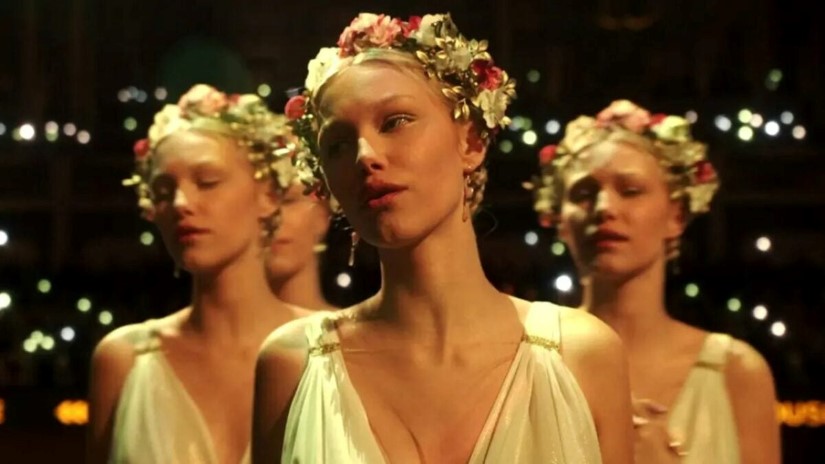
Vesta Sweetwater – played by Grace VanderWaal – sings a song during the wedding: “My Pledge,” which was written by and performed by VanderWaal. Was that all playback on set, or were there any vocals from set that you used in the film?
NF: It was all playback. It was actually a great breather for us. We did record some clapping in unison. I remember that recording day. We also augmented her performance with ADR inhales and exhales, which always help to glue the song to the picture whenever you’re in a playback situation.
I was especially happy with how Christian T. Cooke, our music and dialogue re-recording mixer, placed it in the auditorium. That really helped to take the playback curse off of it.
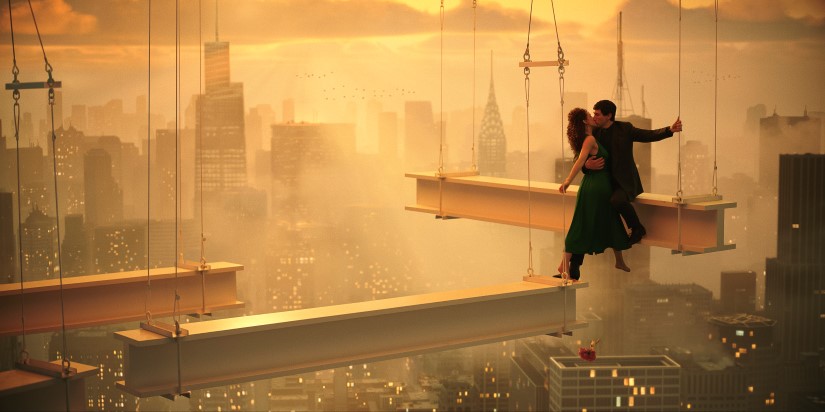
How did you create the sound of time stopping and slowing down? For example, when Cesar slows down time as the building is blowing up? Or, in the very first frame of the film when Cesar stops time to save himself from falling off the Chrysler Building?
NR: We were talking earlier about how Francis would turn to each of us and ask, “What can you bring to this movie?”
One of the things I remember is that he asked that question near this part in our second screening with him. My pitch in the moment was to indulge in the hand-off between the violence of the explosion and the peaceful tranquility of the time stop. This moment between Cesar and Julia is important. They’re the only two who can experience time. It’s the start of their love story.
My pitch in the moment was to indulge in the hand-off between the violence of the explosion and the peaceful tranquility of the time stop.
The question was how do we transition into something gentle and almost musical? My suggestion to Francis was, “Once it all stops, let’s focus on the particulates – these pieces of rubble, big and small. Maybe they’re just suspended in air rather than frozen in place, we can hear them clinking and plinking against each other. We can go with something that feels pretty, an almost musical moment in the middle of absolute chaos.” That got a big thumbs up. So that was the approach.
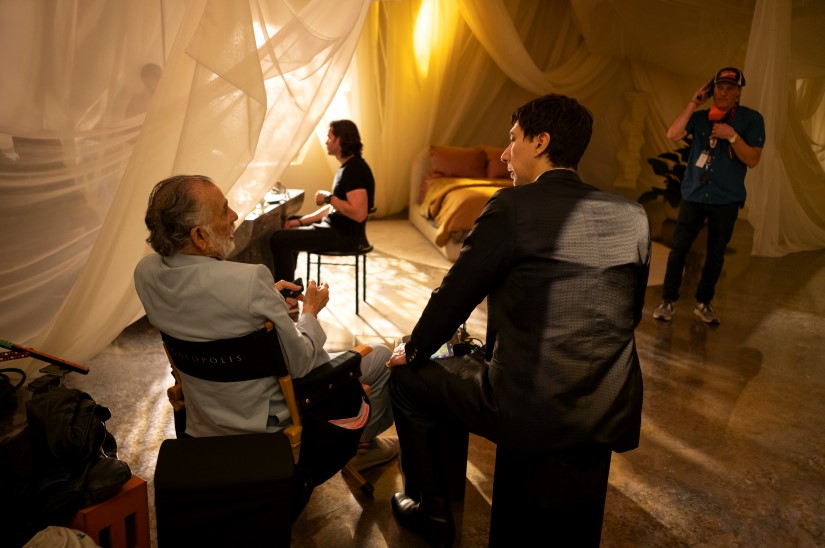
And that plays into the percussive theme, too….
NR: Yeah, and that was born from a collaboration between Cam, Jeremy, and Cyro. Cam played with the idea of having this wild percussive musical moment leading up to it when they’re about to flip the detonator switch. He built a proof of concept that really worked well. Then he sent that over to Cyro who recorded a version of it that was tailored to the images on screen. Jeremy tied it all together.
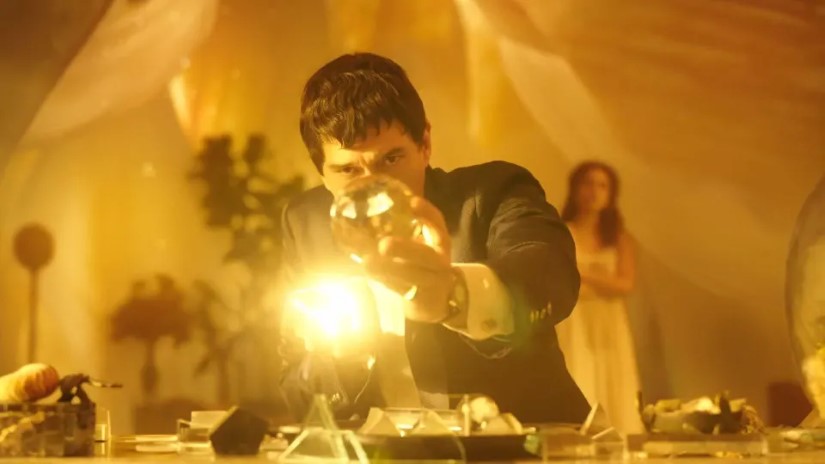
What went into the sounds of the megalon? It’s used in many different ways – like in the reconstruction of Cesar’s face, Vesta Sweetwater’s dress, the utopian building project, Cesar’s remembrance of his dead wife, etc…
NR: That was a big collaborative back-and-forth between sound designer Tyler Whitham and me.
It was usually a two-part design. The first element was recorded source texture elements that would allow us to anchor it into the reality of what’s on screen, such as rubbing glass against granite or in one scene there was an oversized novelty whiffle ball – whatever we needed to texturally anchor it to what you were seeing.
…it should be playful, childish, mischievous, and curious. That’s why we reached for kids’ laughter as a foundation.
The other element was a synthesized energy element. For much of that, we used kids laughter fed through the granular synth engine in UVI Falcon. That gave us these weird, long stretched-out tones that were rooted in the innocence of kids at play.
Francis talked a lot about what megalon is. It’s this organic almost plant-like material. It’s very energy efficient, highly mouldable, and because it’s early in its development toward intelligence, it should be playful, childish, mischievous, and curious. That’s why we reached for kids’ laughter as a foundation.
Then we put it through Radium in Soundminer to give it a rapid vibrato so that it felt like it was giggling. Somehow it felt fast but also frozen in time.
Once combined, the texture layer would ground the megalon in the scene while the underlying energy layer added a living component.
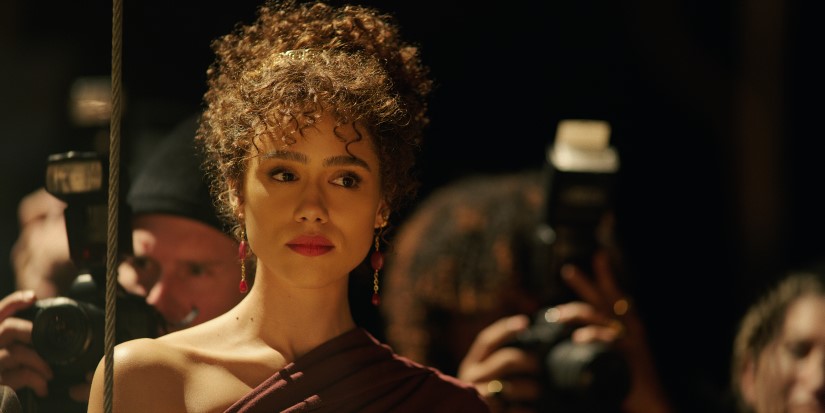
What were your biggest challenges in creating the sound for Megalopolis?
NR: Remaining sane! Honestly, Francis is as encouraging and supportive as he is eccentric. And in many ways, this movie is a treat to himself. It exists on another plane. There were days when making this movie felt normal, but there were also days when it felt like our minds had been strapped into one of those gyroscope carnival rides for 8 hours. Coming out the other side, you feel like, “What just happened?”
We went in very well prepared to mix one kind of movie. And we ended up with something very different from everyone’s original intent.
NF: I’d say changes. Changes are always a certainty. No designer ever expects to show up with the cake fully baked, right? In terms of placement, the deck is going to get shuffled. That’s something typically very technical and we deal with it but I think we learned quickly that Francis’s vision is constantly evolving and not just in terms of the picture cut. At one point he likened his films to a piece of clay that is always being molded. Sometimes even after his films are complete – as numerous recuts of his movies will tell you – it’s still not finished.
We went in very well prepared to mix one kind of movie. And we ended up with something very different from everyone’s original intent. Fortunately, we learned how to pivot quickly over the years and respond to new ideas. Cam was very helpful in being our North Star, sometimes corralling the ideas and translating a little for Francis and bringing sense to it.
Again, I have to credit Jeremy Flower and the incredible job he did in trying to take a film score that didn’t exist for some of these new ideas and having it make sense.
…you can struggle between creating sound based on a pre-conceived vocabulary we’ve developed as an audience and being truly inventive.
For me personally, I would say the biggest challenge in this whole process was embracing what some might consider a potentially unpopular idea and making it the best that it can be – even working with doubt because, in this job, you can struggle between creating sound based on a pre-conceived vocabulary we’ve developed as an audience and being truly inventive. Francis is someone who trusts very much in the process and he believes that the end result is sometimes merely a by-product of a joyous, exciting, and maybe sometimes tumultuous creative process.
In a nutshell, the biggest challenge for me was learning to defy logic and run solely on instinct at times.
NR: We have a pretty good shorthand with Cam. When changes came from his cutting rooms, they always made sure that we had all the EDLs and everything that we needed. If it was a big rebalance, they made sure we had time to deal with it. That’s not always a luxury we get to enjoy.
Follow the mistakes. Mistakes shouldn’t just be written off because they were unintentional. Sometimes there’s brilliance in them.
Modern tools, like The Cargo Cult’s Matchbox, do quick, blunt reconforms that will sometimes reveal something you didn’t spot before and a new opportunity comes from it because you find yourself truncating the end of a big, complex build, whether that’s sound design or a moment of crowd or even something as incidental as a camera flash. You can make something a bit more interesting out of the wreckage that comes out of a conform. As Nelson was saying, this film is a piece of clay. Follow the mistakes. Mistakes shouldn’t just be written off because they were unintentional. Sometimes there’s brilliance in them. Those happy accidents can spring up out of a reconform.
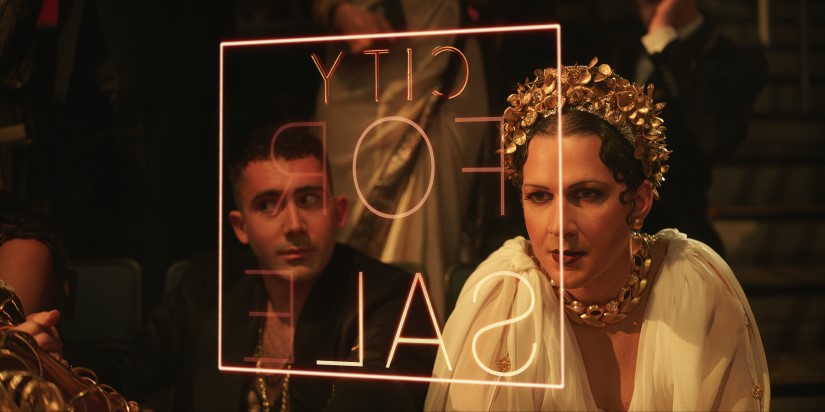
What was the most challenging scene for sound design? What went into it?
NF: The obvious answer would be Madison Square Garden, but in a way, it wasn’t because there was so much opportunity there. It was a challenge in that the weirdness bar was already set high, so this is what you had to hurdle. For me, in terms of a lot of looping we had to do for various reasons, the challenge was to make that feel natural.
It was a challenge in that the weirdness bar was already set high, so this is what you had to hurdle.
Another scene, because it was such a moving target, was the fall of New Rome near the end of the film. Building the chaos and the crowds and storytelling through there, through the tunnel – in the subway through Cesar’s speech – was a very challenging section thematically – trying to tell a story there and trying to honor what Francis was trying to do.
But in terms of sheer workload, it’s still going to be Madison Square Garden. There was just so much to do. Maybe because it was so fun to do, I don’t remember it being challenging in a difficult way.
NR: I would say the post-shooting dream sequence was up there. Tyler and I tossed that back and forth so many times. Our first pass sounded amazing but it said very little.
It’s one of the things I loved about working with him; he was always available to us when we had more questions than answers.
It took going back over that with Francis and getting another one of his live director’s commentaries on it for us to stop scratching our heads and really focus in on what he was trying to say about Cesar effectively reversing time, going back to his birth, reflecting on his mother, reflecting on the loss of his wife, the genesis of megalon and the things it’s capable of. Hearing Francis talk about it really brought that sequence into focus for us. It’s one of the things I loved about working with him; he was always available to us when we had more questions than answers.
In terms of an overall challenge, I think one of the trickiest things for me was navigating the translation between a process that Francis had a hand in developing when he was working with folks like Walter Murch and Randy Thom, and the process I(/we) know today. The seeds these guys planted have grown into this massive, hulking tree with specific subsets of expertise that we’re all so familiar with. Francis remembers a time when sound design and music were interchangeable ideas. It’s easy to respect where all of this came from – the history of sound design – and he was part of its genesis. Francis is interested in the pure essence of what the speakers can bring to a story and we had to work together as a team to make sure he got what he was reaching for regardless of where he would reach.
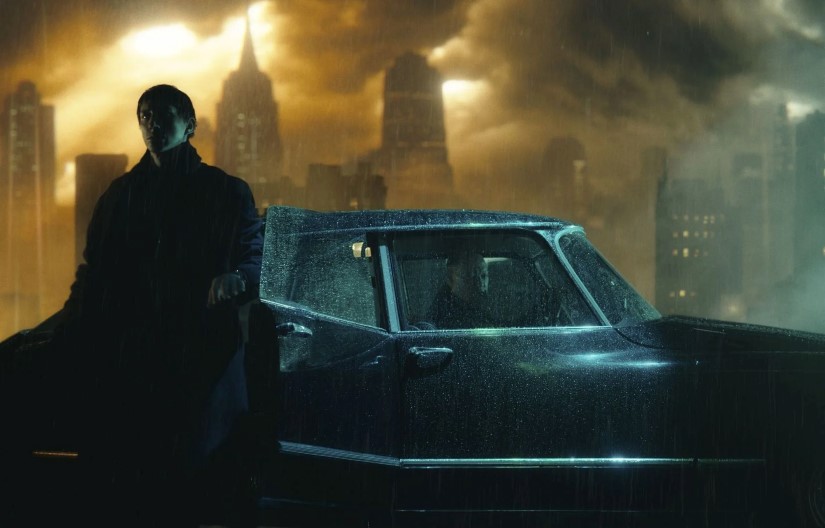
Did you do any field recording for the film? Or, were there any indie sound libraries that were particularly helpful for this film?
NR: The subject matter in this movie is pretty grand and loads of pre-existing libraries out there helped accomplish a lot of what was needed. Of course, we all recorded stuff though.
Sound effects editor Josh Brown recorded his kid laughing, screaming and crying, which we used for the megalon and some other elements.
Tyler shot some rainy windshield wipers to sync with clocks for the sequence where Julia is tailing Fundy and Cesar through the city…
Craig [MacLellan, sound effects editor] bought a bunch of party noise makers and vuvuzelas and gave them to his kids and said, “Go!” They made a racket and that was used for Madison Square Garden.
Tyler shot some rainy windshield wipers to sync with clocks for the sequence where Julia is tailing Fundy and Cesar through the city (this is an example of one of our imagined clocks).
There were no big recording sessions; it was mainly smaller stuff that’s just easier to record than trying to find the right sound in a library.
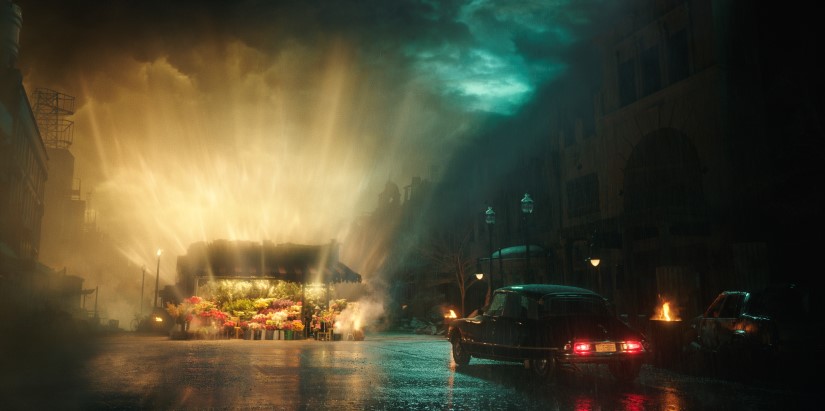
Tell me about your post process. When did you get started on the film? How far along was the VFX for the screening?
NF: There was crude VFX. It was a long cut – probably approaching 3 hours.
We started our preliminary discussions in August 2023, and then Francis invited us down to the facility he had built in Peachtree City, Atlanta. He walked us through the facility. He walked us through the film. And to be clear, I thought we were going down for the whole weekend because his time is at a premium and we’d be at his disposal – he’d only have a couple of hours for us.
He spent a long time with us. We were talking about movies, watching movies, socializing, and doing everything he did.
But that wasn’t the case. He spent a long time with us. We were talking about movies, watching movies, socializing, and doing everything he did. He dedicated the weekend and his attention to us. We also had a chance to hear the mix room they had built there. Masa Tsuyuki had it built, and it was impressive I have to say.
NR: I have to throw a shout-out to James Russell (ADR recordist & engineer/re-recording mix assistant). He was an absolute magician.
NF: James was the mix tech turned recordist and assistant. He ascended so quickly and learned like a sponge.
I visited Peachtree City a couple of times for recording sessions that we did in the mix room with crowd. We had about 80 loop groupers…
Basically by mid-September, we were fired up and working at Sound Dogs in Toronto through the winter with occasional reviews on Zoom with Francis and Cam. I visited Peachtree City a couple of times for recording sessions that we did in the mix room with crowd. We had about 80 loop groupers for this sort of thing.
Then in early February, Nathan traveled to Peachtree City for pre-dubs with Brad Zoern (re-recording mixer) while I worked with Chris Cooke (re-recording mixer) pre-dubbing dialogue and music at Company 3 in Toronto.
Then we got the band together in Peachtree City in mid-February. We mixed until mid-March and then returned to Toronto for the IMAX print master in mid-March.
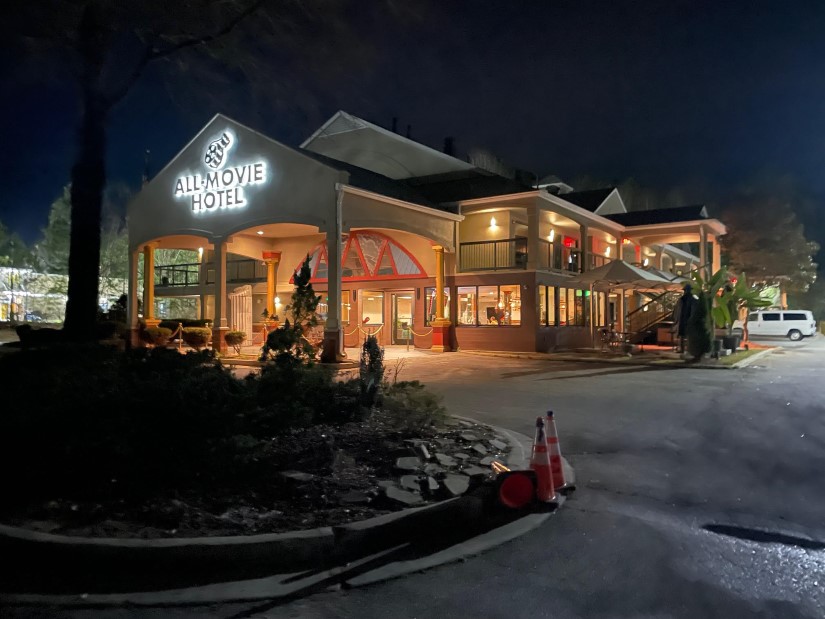
Were you still getting VFX shots on the dub stage, or were things pretty much nailed down by then?
NR: Not only was the VFX coming in, but we had access to some of the VFX crew. I’d just be in this dark mix room and Peter from VFX would show up with his laptop to give me a heads-up on something that was incoming. That challenging flashback sequence after the shooting comes to mind. It was pretty special to have access to the wider team like that.
NF: We were all there – the entire post team with Francis. Everybody was there, living there and working there shoulder to shoulder. It was quite an experience.
There are luxury hotel rooms and on the ground floor are all the VFX suites, sound suites, a kick-ass mix room, ADR suite…It’s pretty impressive.
All Movie Hotel in Peachtree City is a converted hotel. There are luxury hotel rooms and on the ground floor are all the VFX suites, sound suites, a kick-ass mix room, ADR suite…It’s pretty impressive. There were pinball machines in the lobby.
Cam was in Atlanta longer than anyone on the editorial team. He was there for the long haul, right from the first day of shooting.
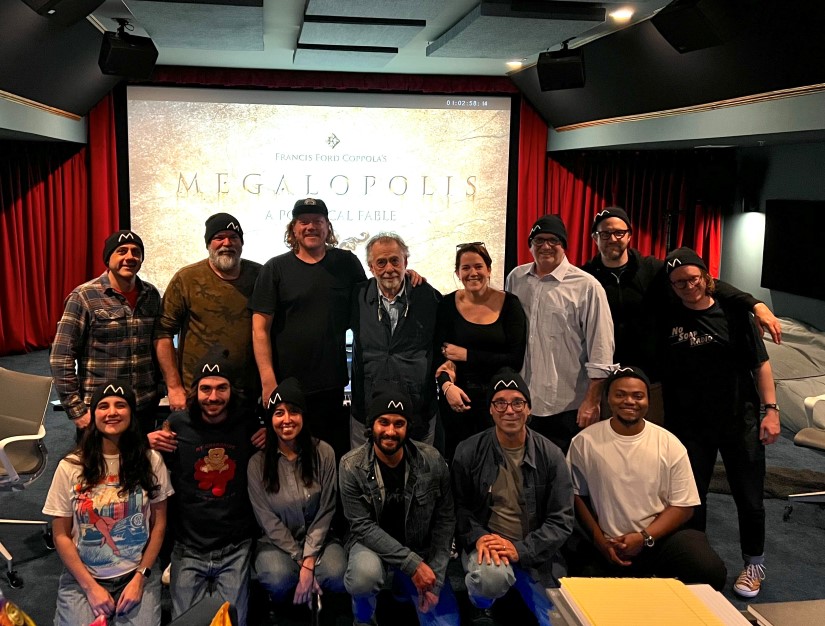
What did you learn while working on the sound of Megalopolis?
NR: Mostly that our limits aren’t where we think they are. You go to the very edge of your own creativity and then you leave feeling dizzy because you don’t think you came close.
NF: But it takes a filmmaker like Francis to tell you that, or to push you sometimes to those places. For me, it was a really creative experience.
It was about fearlessness and trusting what you’ve learned to this point…
It was about fearlessness and trusting what you’ve learned to this point because Francis’s reputation precedes him and he’s a formidable presence in a room. That can be daunting at first, but he’s also this fearless creator. He’s completely an untethered artist and he’s a great example for any of us who work in filmmaking or anything creative. He’s so disarming and so collaborative. I think he learned to trust us so quickly and that in turn made it easier – certainly for me – to trust my instincts and be unafraid to, as we said, get weird.
As a side note (and it touches on what we said before about working down there with the team), since we were housed together with everyone working closely with Francis in Peachtree City, I think we got a sense of the camaraderie that we typically miss out on from not being on set.
So in a world and in an industry that’s becoming increasingly remote…there’s a lot to be said about making the right environment for a group of people to put their heads together and be creative.
I’m convinced that the kind of creative incubator that Francis knowingly created down there directly affected my own process and therefore the end result.
So in a world and in an industry that’s becoming increasingly remote, what I learned is that there’s a lot to be said about making the right environment for a group of people to put their heads together and be creative. And that’s what he made down there.
NR: I agree. It was hard but I wouldn’t trade it for anything else in the world.
NF: I feel the same. We’re going to remember this experience and what it taught us for years to come.
A big thanks to Nathan Robitaille and Nelson Ferreira for giving us a behind-the-scenes look at the sound of Megalopolis and to Jennifer Walden for the interview!

